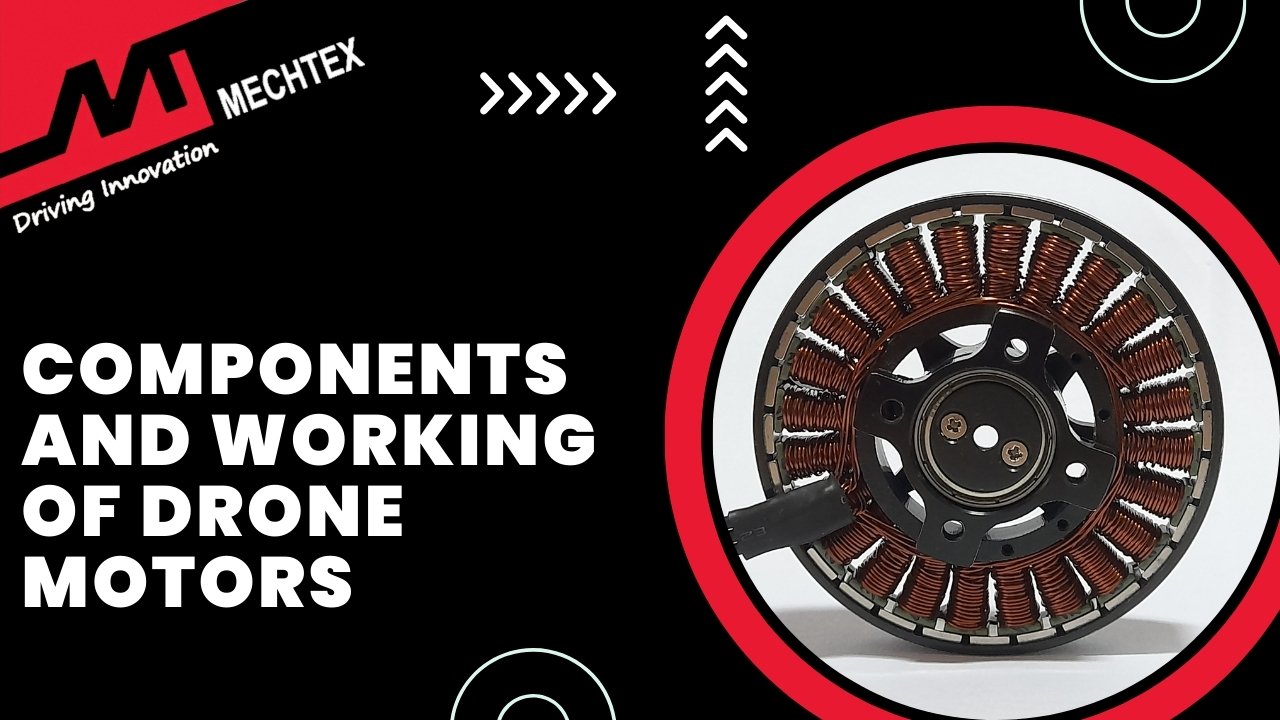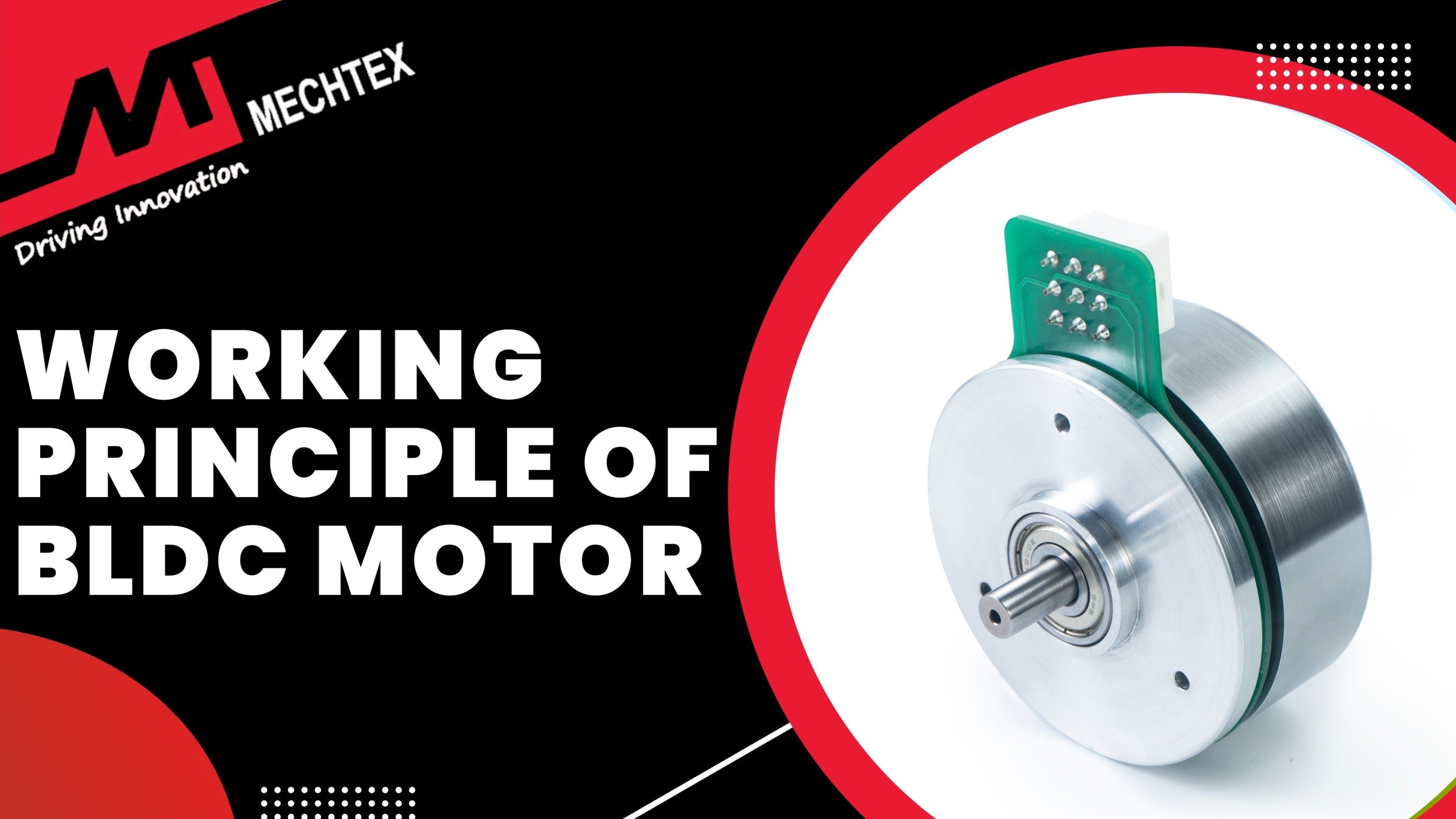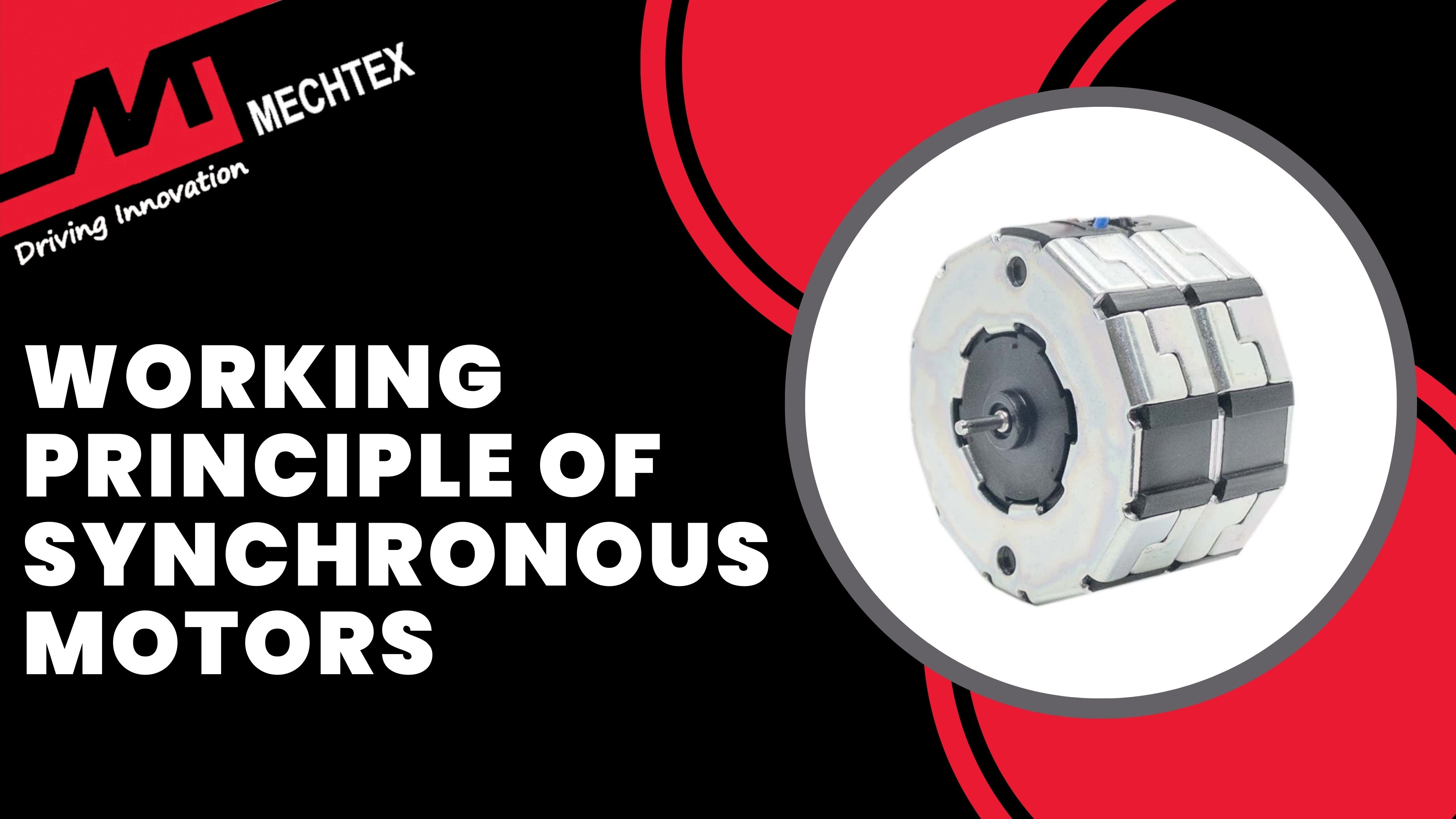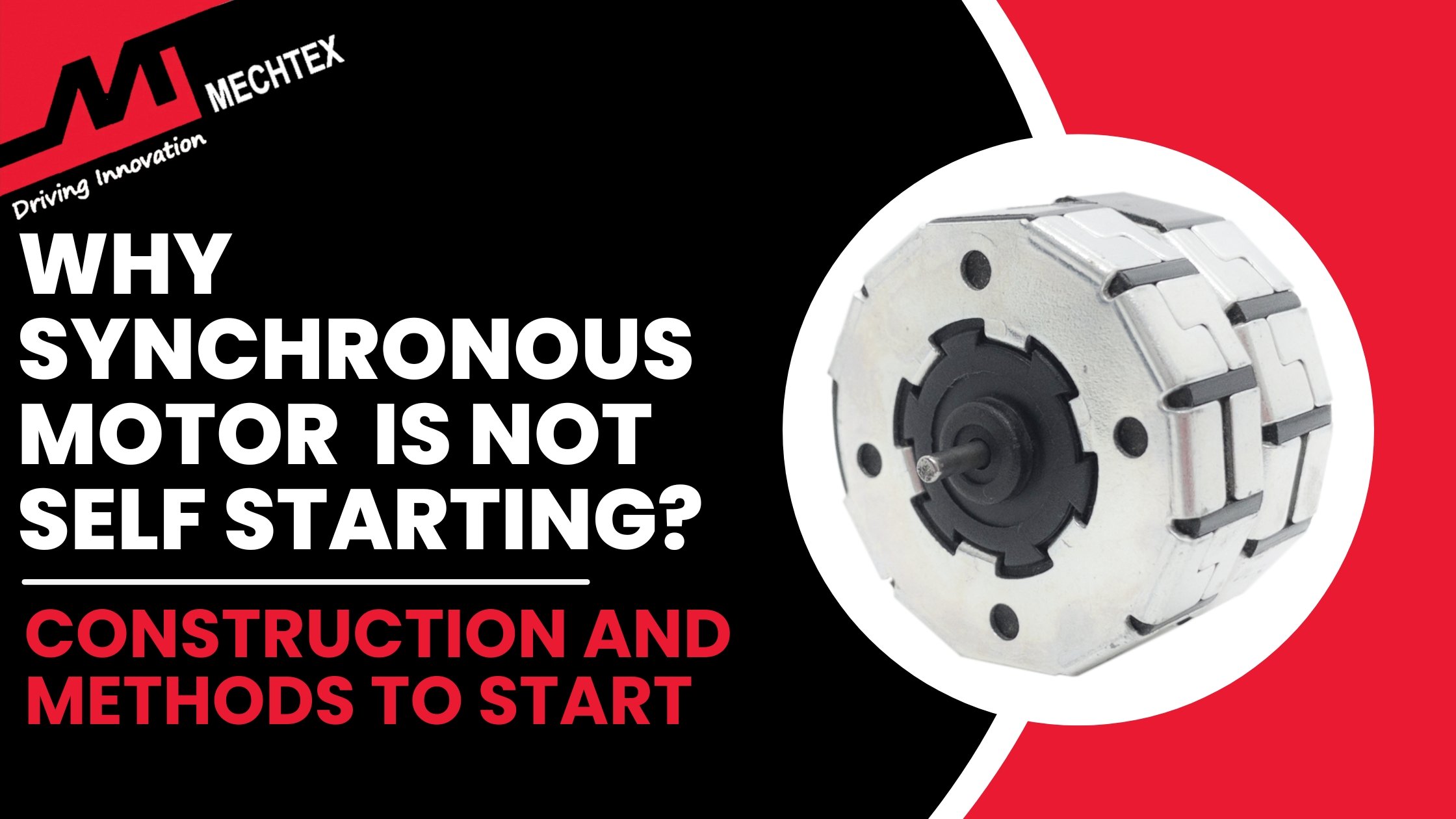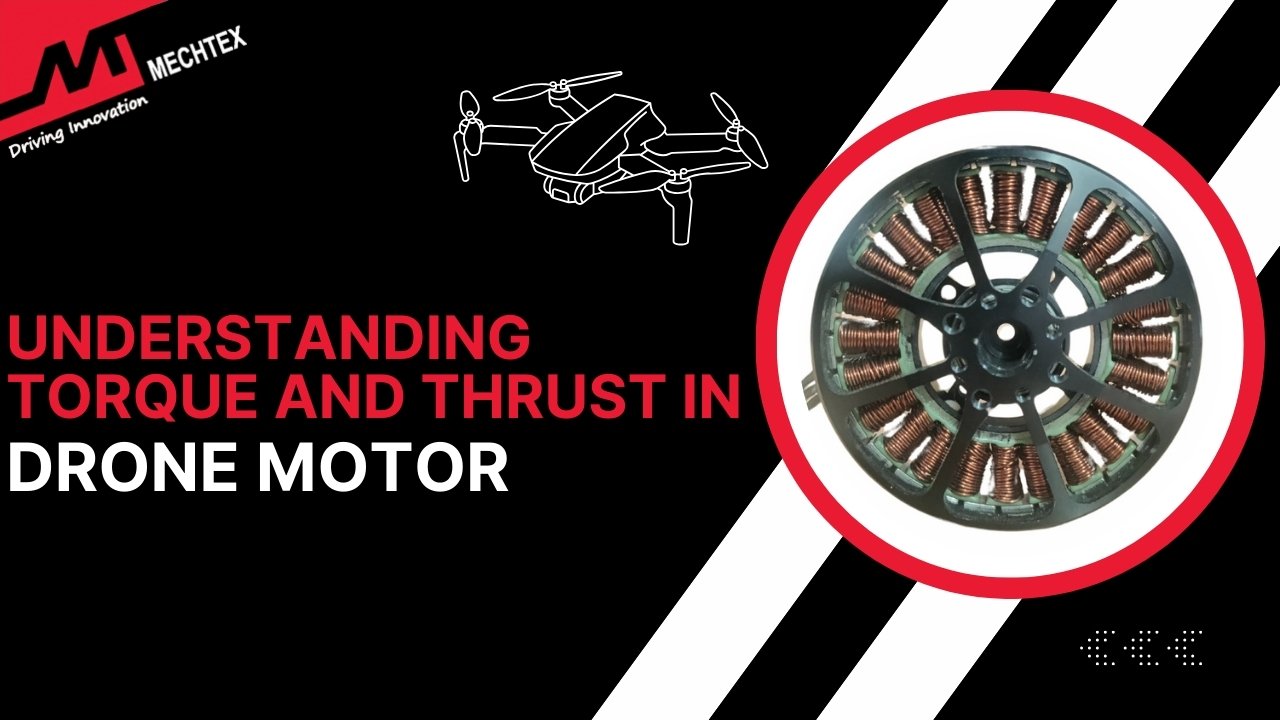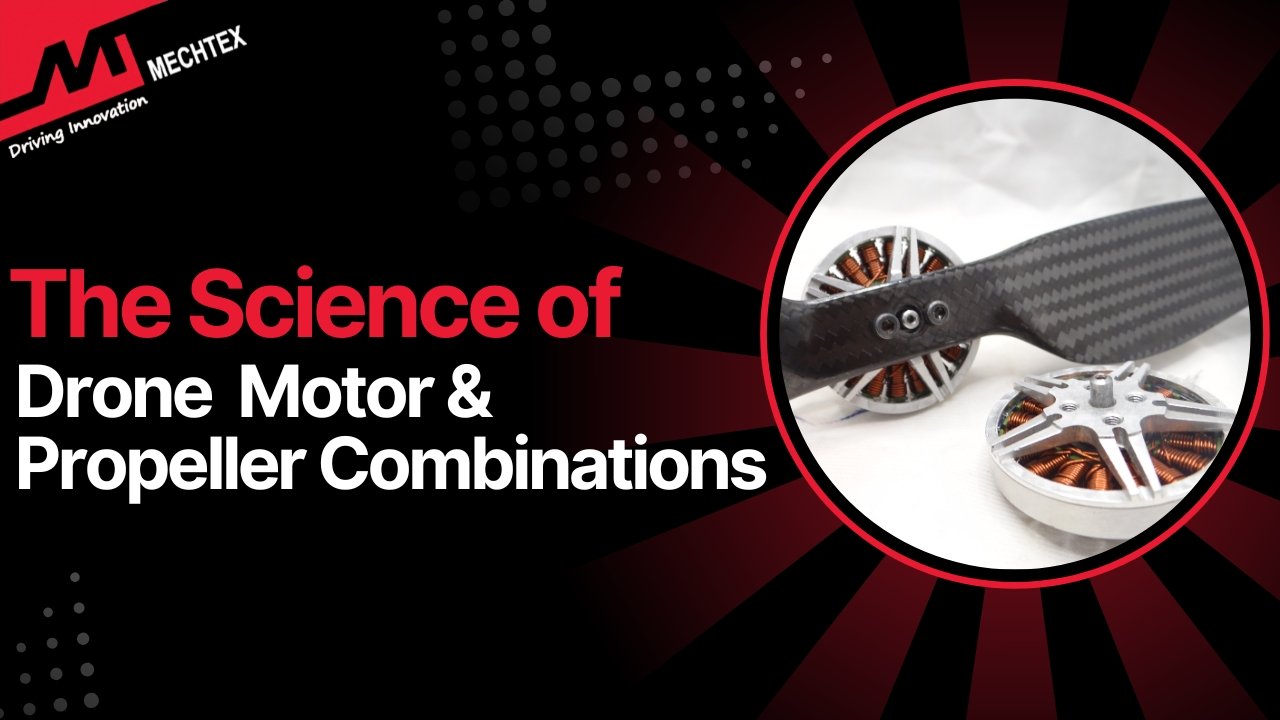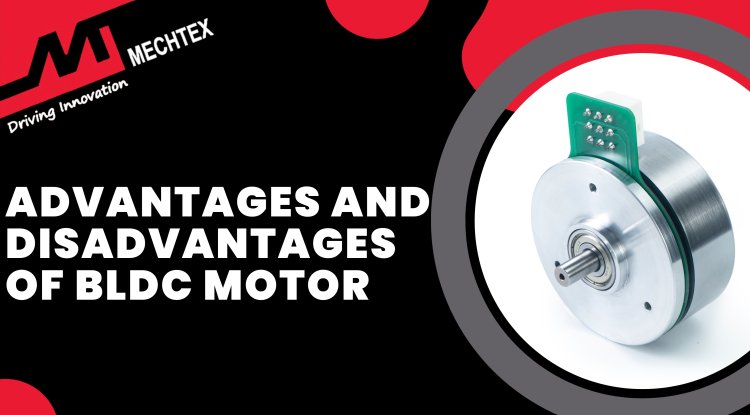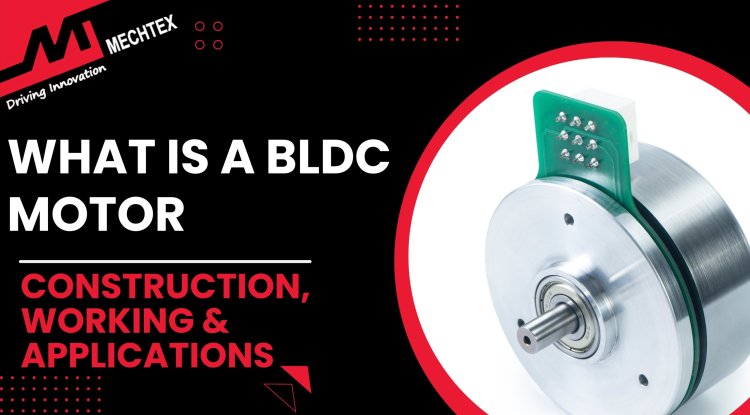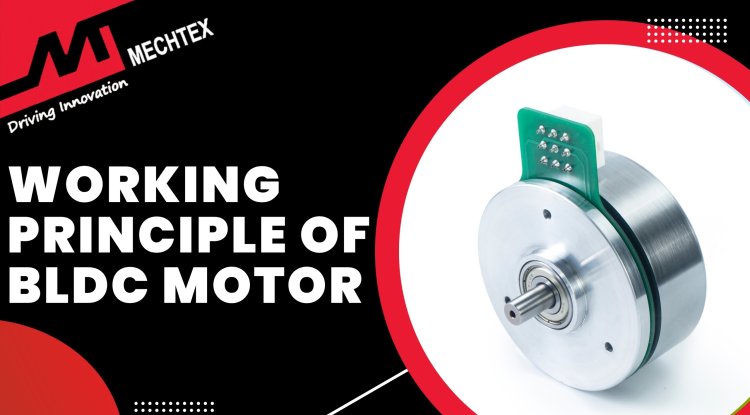Drone Motor Thrust - Definition, Importance, and Optimization Guide
Thrust is a force produced by the motor and propeller system to lift the drone upwards and move it in a specific direction. It is measured in grams (g), kilograms (kg), or Newtons (N). Without it, the drone cannot lift off, hover or manoeuvre in the sky.
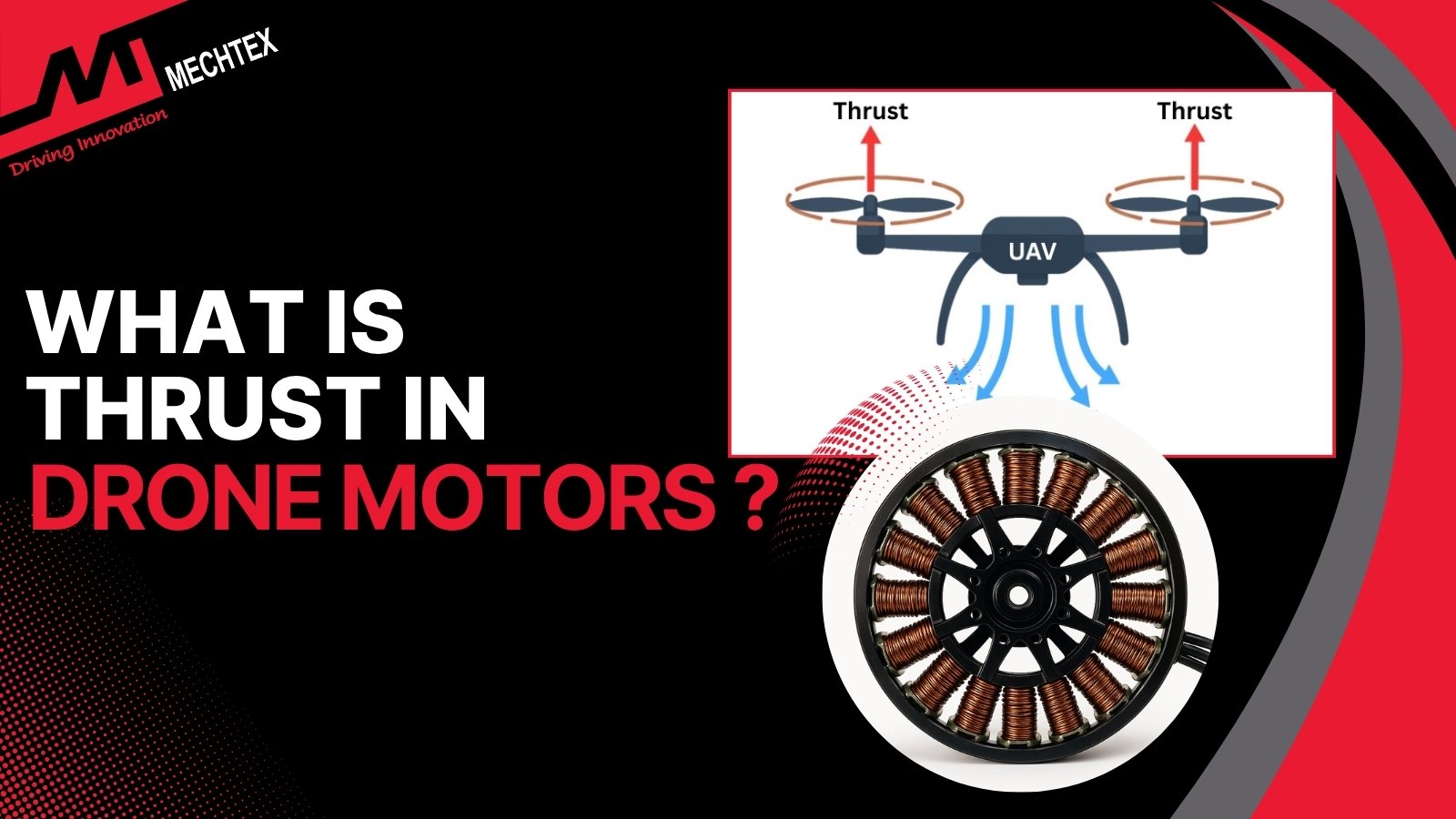
The performance and stability of the drone are intricately tied to a fundamental parameter called thrust. For drone manufacturers, understanding thrust is critical to achieving optimal lift, manoeuvrability and efficiency. Whether you are developing a drone from scratch or fine-tuning the existing setup, one must know how it works and why it matters in the drone.
In this blog, we will explore what thrust is, why it matters in drone motors, how it is generated and what factors affect the thrust.
What is Thrust in Drone Motors?
Thrust in the drone motor refers to the aerodynamic force produced by the motor and propeller system, which pushes or lifts the drone upwards and moves it in a specific direction.
It is a vertical or directional force generated as the propellers rotate, displacing the air downward, which creates an equal and opposite force that lifts the drone.
This force is measured in grams (g), kilograms (kg), or Newtons (N). It directly correlates to the drone motor’s RPM, propeller size, and input power. In drones, achieving a proper thrust-to-weight ratio is crucial for stable flights.
For instance, if a drone weighs 1 kg, the combined thrust of all motors must exceed the weight of the drone to achieve lift-off. Typically, drones are designed to generate at least 2x thrust with respect to their total weight to allow stable hovering, acceleration and manoeuvring.

The thrust is categorised into two types - Static thrust and Dynamic thrust.
Static Thrust: It is the force which is measured when the drone is stationary. It is useful for benchmarking the performance of a drone during testing.
Dynamic Thrust: It occurs during the actual flight and is influenced by airspeed and other environmental conditions.
In summary, thrust defines the drone’s lifting capability and responsiveness, which makes it a fundamental parameter for selecting the right drone motor-propeller combination for drones.
How Thrust is Generated?
Thrust in the drone motor is generated through the coordinated operation of several components. Each component plays a crucial role in converting electrical energy into aerodynamic force. This force lifts the drone and enables the movement in the air.
Here are the key components and the step-by-step process of generating thrust:
Key Components
- BLDC Motors
These are the high-efficiency motors that rotate the propellers.
- Electronic Speed Controller (ESC)
Regulates the speed of the drone motor based on signals from the flight controller sent by the pilot.
- Propellers
Convert rotational motion into thrust by displacing air.
- Flight Controller
It is the central processing unit that manages the motor speed.
Step-by-Step Thrust Generation Process
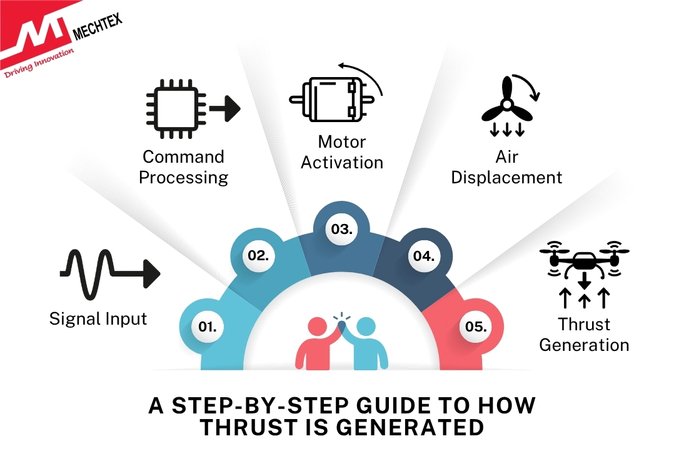
- Signal Input
The pilot sends the input signal through the remote controller, which is received by the drone flight controller.
- Command Processing
The flight controller sends PWM (Pulse Width Modulation) signals to the ESCs. The ESCs translate this signal into a voltage signal that powers the BLDC Motor.
- Motor Activation
The BLDC motors or drone motors receive the input signal and rotate at high speed. The motor’s internal magnet and stator winding interact and generate torque.
- Air Displacement
As the motor rotates the propeller, it cuts the air and generates a downward airflow, which in turn produces the thrust as per Newton’s third law.
- Thrust Generation
This upward force counteracts gravity, allowing the drone to lift off. By varying the speed of individual motors, the drone achieves directional control.
Why Thrust Matters
Thrust is the force that enables the drone to fly. Without it, the drone cannot lift off, hover or manoeuvre in the sky. It works against gravity to keep the drone airborne. Its significance can be understood by the following points:
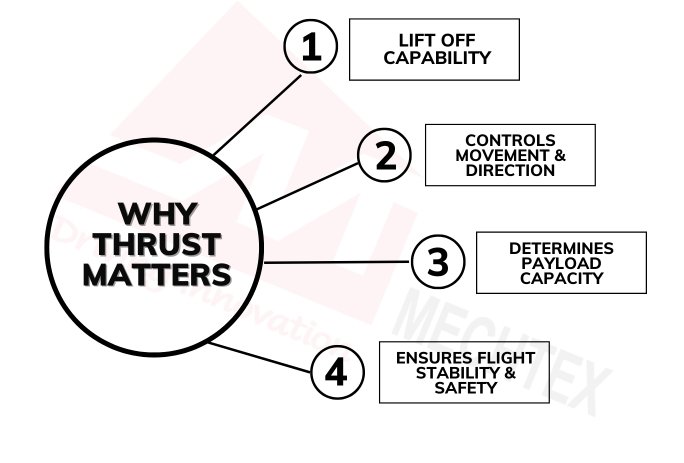
- Lift off Capability
Thrust directly counters the weight of the drone. For lift off, the total thrust produced by all drone motors together must exceed the drone’s weight.
For hover, the thrust must exactly match the drone’s weight. If the thrust drops, the drone will descend. This thrust-to-weight balance is crucial for applications where stable hovering is essential.
- Controls Movement and Direction
Thrust isn’t just dragging the drone vertically. It also governs how the drone moves laterally and rotates. By varying the speed of individual motors, the drone creates differential thrust. For example:
-
-
-
- Increasing thrust on rear motors tilts the drone forward (pitch),
- Increasing thrust on one side causes it to roll,
- Adjusting opposite motor pairs enables yaw (rotation).
-
-
- Determines Payload Capacity
A drone’s thrust-to-weight ratio directly affects how much load it can carry. Drones used for delivery, agriculture, or industrial inspections often carry cameras, sensors or parcels. The drone motor must generate sufficient thrust to lift both the drone and the payload while maintaining stability.
- Ensures Flight Stability and Safety
Proper thrust distribution ensures that the drone remains balanced in the air. Any imbalance can cause instability, tilting or sometimes crashing. Thrust is continuously adjusted in real-time by the flight controller based on input and sensor feedback to maintain a stable flight path.
Application-Specific Thrust Requirements in Drones
Different drone applications demand different thrust capabilities depending upon the nature of the task, required payload and desired flight performance. Here is the list of applications and their thrust requirements:

1. Aerial Photography & Videography
-
-
- Thrust Requirement: Moderate, i.e Thrust to Weight Ratio must be around 2:1
- Reason: Cameras and gimbals add weight. Therefore, the drone must generate sufficient thrust to counter payloads and ensure stable flight.
-
2. FPV Racing Drones
-
-
- Thrust Requirement: High, i.e Thrust to Weight Ratio must be between 4:1 to 6:1
- Reason: FPV drones need rapid acceleration, quick manoeuvres and smooth turns. High thrust enables FPV drones in instant response and dynamic agility.
-
3. Delivery Drones
-
-
- Thrust Requirement: Moderate, i.e Thrust to Weight Ratio must be between 2.5:1 to 3:1
- Reason: These drones carry variable payloads such as parcels, emergency kits, etc. They require surplus thrust to accommodate extra weight while maintaining stability.
-
4. Surveillance & Inspection Drones
-
-
- Thrust Requirement: Moderate, i.e Thrust to Weight Ratio must be between 2:1 to 2.5:1
- Reason: Equipped with payloads such as sensors, thermal cameras, and a communication module. Therefore, these drones require reliable thrust for easy lift-off and stable hover.
-
Conclusion
Thrust is the heart of drone flight. It's not just about lifting the drone but ensuring stability, responsiveness, and efficiency. From propeller pitch to motor voltage, each factor influences how effectively thrust is generated and managed.
Understanding and optimising drone motor thrust allows manufacturers and operators to build more capable, reliable, and mission-ready aerial platforms. Whether you're in FPV racing, commercial mapping, or delivery systems, getting your thrust calculations right is key to flying higher, both literally and in performance.



